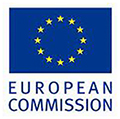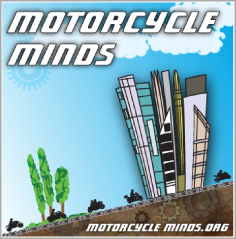 With a not so surprising headline the European Commission has welcomed the European Councils approval as regards the laying down new safety and environmental requirements for the type-approval of motorcycles and other L-category motor vehicles – the so-called “anti-tampering” regulation.
With a not so surprising headline the European Commission has welcomed the European Councils approval as regards the laying down new safety and environmental requirements for the type-approval of motorcycles and other L-category motor vehicles – the so-called “anti-tampering” regulation.
European Commission Vice President Antonio Tajani, Commissioner for Industry and Entrepreneurship, said: “I welcome today’s Council decision to adopt our proposal to improve safety of this wide range of light vehicles. The new law will streamline EU legislation, as promised in our automotive action plan on 8th of November. Less legislation means less costs and administrative burden for industry. At the same time we will considerably increase the safety of these vehicles and reduce their harmful emissions.”
One of the main issues for riders has been the fear that they will not be able to “positively” modify their bike, the Commission have stated, “Anti-tampering requirements will also be introduced but will only apply to manufacturers of new types of light vehicles and to new vehicles with maximum speed or power limits. Their aim is to prevent modifications which would adversely affect environmental protection or functional safety. As these measures will not apply to current light vehicle owners they will not, for example, prevent motorcycle owners from modifying or customising their own vehicles.”
As we have previously reported, “the higher powered motorcycles i.e. L3e equal to a full A licence and L4e (motorcycles and sidecars) also equal to a full A licence will be excluded from anti-tampering measures.”
Improved safety for motorcycles: European Commission welcomes Council approval
Original Source: European Commission
The European Commission welcomes the final approval by the EU’s Council of Ministers of new rules for motorcycles and other light vehicles. The fitting of advanced braking systems will now become obligatory for two-wheel motorcycles and automatic “switching-on” of headlamps will be mandatory for all light vehicles. L-category vehicle is the family name for such light vehicles and they include engine powered bicycles, mopeds, motorcycles with and without a side-car, tricycles, quads and quadri-mobile vehicles. The Regulation also sets ambitious emission lowering requirements for these vehicles.
By introducing enhanced market surveillance requirements, a level playing field will be created for all L-category vehicle manufacturers in a sector where presence of non-compliant products may cause significant safety risks and environmental threats. In addition, the Commission proposes to radically simplify its current set of laws for light vehicles and reduce them from fifteen Directives to five Regulations. The entire package would be applicable as of 1 January 2016, offering sufficient lead-time for the industry to adapt to the new set of rules.
European Commission Vice President Antonio Tajani, Commissioner for Industry and Entrepreneurship, said: “I welcome today’s Council decision to adopt our proposal to improve safety of this wide range of light vehicles. The new law will streamline EU legislation, as promised in our automotive action plan on 8th of November. Less legislation means less costs and administrative burden for industry. At the same time we will considerably increase the safety of these vehicles and reduce their harmful emissions.”
More information – Approval and market surveillance of two- or three-wheel vehicles and quadricycles
The Regulation will bring the following improvements:
1) Simplification; Framework Directive 2002/24/EC and its 14 implementing Directives will be repealed and replaced by a Regulation. Besides “cleaning-up the house” and streamlining the existing provisions, the new Regulation will apply global harmonised vehicle regulations to the largest extent possible, and closely follow the UNECE regulations
2) Significantly better safety, in particular:
- making advanced brake systems on two-wheel motorcycles obligatory. This means an anti-lock brake system for medium and high performance two-wheel motorcycles and either a combined brake systems or an anti-lock brake system for low performance two-wheel motorcycles;
- the obligatory fitting of automatic head lamps or day-time running lights for all L-vehicle categories.
3) Better environmental performance of L-category vehicles, specifically:
- the introduction of Euro 4 (2016) and Euro 5 (2020) emission steps.
- Supplemental environmental measures: the introduction of evaporative emission limit and test requirements, durability testing and making CO2 emission and fuel consumption data available to the consumer.
4) Improving vehicle construction requirements, including the introduction of requirements regarding on-board diagnostics for the vehicle’s effective and efficient repair as well as making access to repair and maintenance information available to independent repair shops. Anti-tampering requirements will also be introduced but will only apply to manufacturers of new types of light vehicles and to new vehicles with maximum speed or power limits. Their aim is to prevent modifications which would adversely affect environmental protection or functional safety. As these measures will not apply to current light vehicle owners they will not, for example, prevent motorcycle owners from modifying or customising their own vehicles.
5) Introduction of market surveillance provisions to define the roles and responsibilities of the actors in the distribution chain (such as the manufacturer, importer, distributor and economic operator) and to strengthen rules for technical services. These will help create a level playing field for manufacturers in the sector.
Original Source: European Commission – Click Here


Speak Your Mind